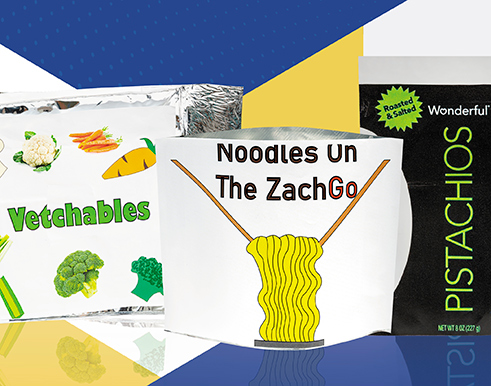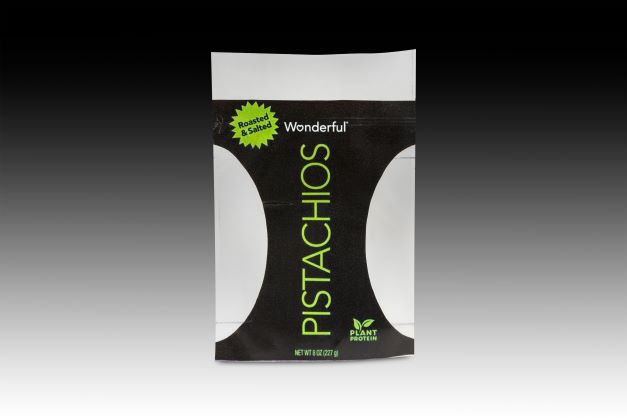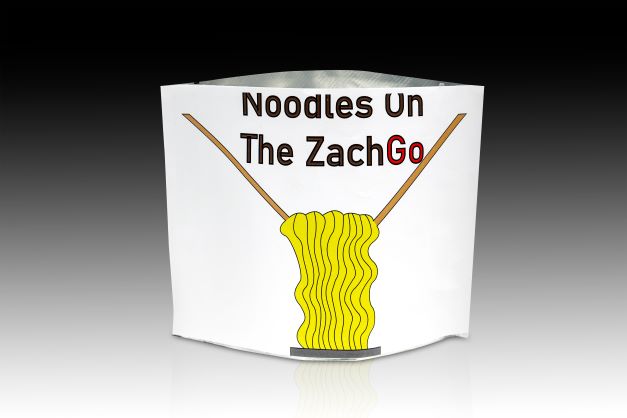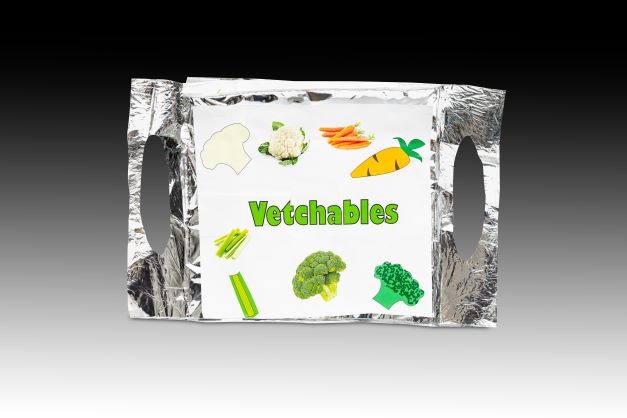Inside the Student Design Challenge
Judges and Students Reflect on 2022 Contest

A college student sits in his dorm room adorned with posters and talks to a video camera as he displays a bag of pistachios in a flexible packaging prototype. Unlike a traditional pistachio package, this one has a compartment built inside of the main bag where the waste shells can be placed to separate them from the nuts that haven’t been eaten.
“You can dispose of the shells in here,” the student says, pointing to a flexible packaging bag inside the bag. “This will be very useful for the consumer, as most of the time they don’t want to make a mess.”
Garbage cans aren’t always nearby, he explains. And the idea could be used for other products, such as candies that are individually wrapped but come in larger bags.
“It can be more environmentally friendly, because if you have something such as STARBURST®, the user won’t litter the little wrappers around,” he suggests during the video that runs for three minutes and 17 seconds. “It can all be disposed of within the package itself.”
The package would be recyclable. And it could be marketed to consumers on the go—or for sports arenas or movie theaters—to cut down on trash thrown on floors. As far as the machinability, he adds, it would be used on a horizontal, form-filled-style machine.
The people listening to the video include four members of the Flexible Packaging Association’s (FPA) Emerging Leadership Council (ELC), who volunteered one afternoon in May to judge the association’s annual Student Flexible Packaging Design Challenge. The judges, who gathered virtually or at the Pregis Innovation headquarters, or Pregis IQ, just outside of Chicago, didn’t know who the student was or what school he attended. That secrecy was intended to ensure objectivity. It was the process replayed that afternoon with numerous other con-test entries and videos from various schools nationwide.
First Place
As it turns out, the pistachio entry won first place. The five-member team that created it was from the University of Wisconsin-Stout: Ben Boie, Aria Elfering, Payton Klaslo, Aaron Kurschner, and Connor Walechka. A $1,000 prize will be divided among the students.

“Before participating in this competition, I was pretty sure I would work in the corrugated and paperboard industries,” says Elfering after being notified that her team’s entry had won. “But participating in this competition and learning more about flexible packaging applications made me consider pursuing flexible packaging in my future career.
I picked Stout was for the polytechnic education. I’ve found that the hands-on labs have been most beneficial in preparing me to be successful in my career.”
Her comments illustrate one goal of the contest: to promote flexible packaging in ways that get students thinking about a future in the industry. Another goal is to see if the students hit on something unique that could be marketable. The judges also were looking for practicality—whether from a consumer or convertor perspective—and if sustainability was being factored in. They also note when students do a good job with presenting their ideas in the videos and supporting materials.
“My goal has always been to design and create sustainable packaging that will better our world and preserve our ecosystems without taking anything away from the customers’ experience,” Elfering adds. “I think my education at Stout prepared me well. One of the reasons I picked Stout was for the polytechnic education. I’ve found that the hands-on labs have been most beneficial in preparing me to be successful in my career.”
Her comments illustrate one goal of the contest: to promote flexible packaging in ways that get students thinking about a future in the industry. Another goal is to see if the students hit on something unique that could be marketable. The judges also were looking for practicality—whether from a consumer or convertor perspective—and if sustainability was being factored in. They also note when students do a good job with presenting their ideas in the videos and supporting materials.
The pistachio team hit those attributes.
Judges Mull Entries
Evan Arnold, Glenroy, Inc.’s vice president of business development based in Menomonee Falls, Wisconsin, points out that maybe the pouch for waste would be more useful if it were outside the main pistachio bag.

“But I like the idea,” he says, as his peers start discussing who should get first place.
Others agree they like the entry but think the pouch should stay on the inside. The back-and-forth discussion makes it clear that the entry caught each judge’s attention.
Kasie Fairbarn, an ELC member who is the product sales manager for blown film for Windmoeller & Hoelscher Corporation in Lincoln, Rhode Island, calls the entry “ingenious.”
“Totally doable,” Fairbarn says. “I really like this one. … Sometimes, good innovation doesn’t have to be complicated. And what I like about the entry is that they could do that tomorrow.”
The idea that it could be used for a variety of products also appeals to her, as well as others.
The judges are torn about who should get second place and eventually decide on an additional award, an honorable mention. Usually, the contest offers a first-place award, as well as a second-place honor. However, the judges have the discretion to veer from that protocol. In previous years, judges have awarded two second-place awards, they point out.
Amy Presher, Profol sales manager from Greenville, South Carolina, likes the pistachio package, as well as an entry for a microwaveable ramen noodle pouch. “Those were my two very tops,” Presher says.
Again, students from Stout took the second-place honor and honorable-mention award. This time, it is a four-person team: Ethan Myers, Riley Runnels, Hayden Zachgo, and Hannah Zastrow. The second-place honor was awarded for the microwaveable ramen noodle pouch, and the honorable mention went to the team’s “Vetchables” flexible veggie tray.
The team started work on the projects at the beginning of the spring semester, says Runnels, who is interested in a career in flexible packaging. “We each individually produced ideas, and for several weeks before our initial write-ups were due for the competition, we got together as a team and narrowed down our list to 10 packages that we thought would be beneficial if they were flexible,” Runnels says. “It was a great experience to let us dive into packaging design while allowing us to be creative and have fun through the process of having an idea and then turning it into a prototype to be evaluated.”

His team member, Zachgo, says his internships, as well as the packaging competition, give him opportunities to demonstrate his skills to the industry. The contest entry was a course requirement, he adds. “Flexible packaging has some draw to it as a career,” Zachgo says. “As a method of packaging, it has sustainability benefits that interest me, and the different forms you can create with flexible material are intriguing, as well.”
During their discussions, the judges say they liked both entries but thought that the veggie tray—with various compartments and a handle—would be tricky to make. Otherwise, they liked the idea that it could be collapsed into a flat surface for transfer from the packaging plant and then filled with vegetables and carried like a tray.
Arnold gives the entry kudos for a good presentation and well-written script. “I think it is pretty cool,” he says. “It’s a very functional package in addition to having product protection.”
He and Fairbarn wonder whether the package would be clear so that consumers could see inside. “You need to see if the veggies are fresh,” Fairbarn says, adding that she likes the overall concept. “It’s a pouch and it’s a tray.”
The microwaveable ramen cup catches their attention for its functionality, with the judges noting that traditional cups come in Styrofoam™ that cannot be microwaved. The entry functions as a bowl and is fully recyclable, according to the students’ entry form.
The judges liked the way the students discuss some of the technical challenges with the materials. Presher points out that the students were wise to point out how traditional ramen packages create a health concern if consumers don’t realize that the materials cannot be microwaved while promoting the sustainability of their prototype. “Props to them for solving a dual issue,” she says.
The entry then gets over another test: practicality. While one judge points out that she is not sure if she would eat ramen out of the package, others said that wouldn’t be their concern as consumers. “I wouldn’t have a problem with eating ramen out of that,” Arnold says.
“I wouldn’t either,” adds Jonathan Quinn, Pregis’ director of market development and sustainability and ELC co-chair.
Additional Comments From Judges
As for the other entries, some of them hit the mark with the judges and others missed. The experts liked when circularity and recyclability claims weren’t overstated. They also liked when products offered a clear evolution of a product idea, even if it wasn’t a revolution.
For example, they seemed to initially like the idea of a resealable, single-serve chip bag before noting that the cost might be prohibitive, especially because most people likely would eat the contents of a single-serve bag without needing to reseal it.
The judges say they will incorporate some insights from this year’s contest into the directions for next year to help students prepare entries. “How can we help them get to the next level?” Fairbarn asks her colleagues. Students should consider the best use of video to capture the judge’s attention, she says. For example, she would encourage students to get more creative, perhaps doing pitches akin to the TV show “Shark Tank” or an infomercial.
Others suggest promoting the contest earlier in the school year, starting in the fall and before the spring deadline, to give students more time.
Yet, the judges also point out that the entries keep getting better. “This year’s entries really elevated the competition from previous years,” they said in a joint statement after the winners were announced. “Students are thinking beyond just containing and protecting the product to improve the consumer experience. The students were really focused on sustainable developments and how to move the industry forward. If this is a snapshot of the engineers to come into the industry, we are poised for some exciting times ahead.”
Thomas A. Barstow is senior editor of FlexPack VOICE®.


